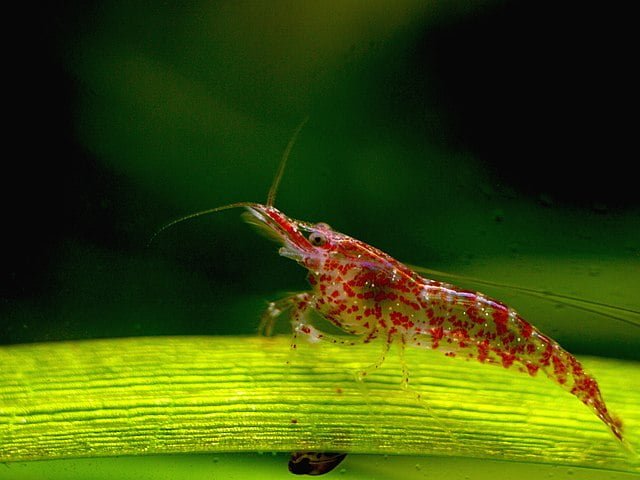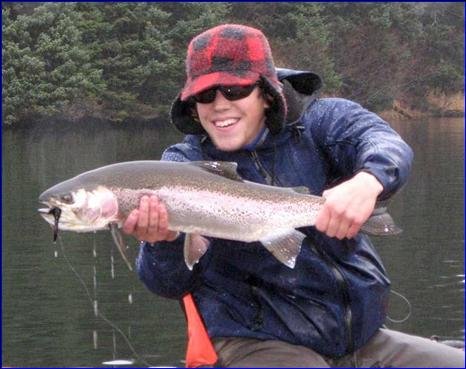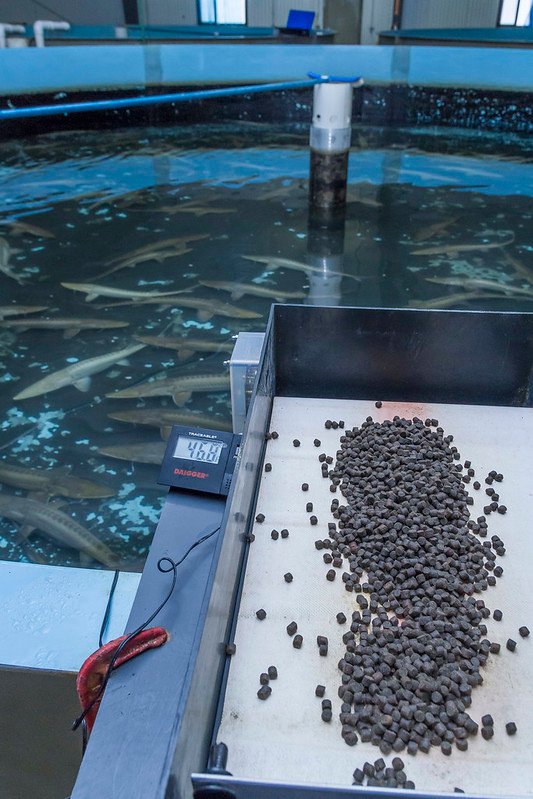One of the innovations in feeding in the aquaculture industry is the implementation of automatic feeding technology in grow-out farms for different species.
While the investment in automatic feeding systems is simple in freshwater aquaculture (e.g. trout, tilapia, and shrimp), the cost of the technology is high for sea cage culture.
Researchers from the University of Cantabria, the Mediterranean Agronomic Institute of Zaragoza (CIHEAM Zaragoza), and the Institute of Agrifood Research and Technology (IRTA) conducted an economic evaluation of the investment in automatic feeding systems for European sea bass grow-out farms in the Mediterranean Sea.
They used an economic model to simulate the annual profit and loss account of a typical fish farm with different production volumes: a small farm with a production of 413 t/year, a medium farm of 1122 t/year, and a large farm of 2539 t/year.
Feeding systems
The researchers proposed three feeding systems, one specific to the size of each farm:
- Cannon or blower feeder: This is an individual feeding system mounted on a small boat to move and blow the feed from one cage to another. This technology is appropriate for small farms due to its low investment cost and low weight of feed that it must transport. The investment cost is EUR5000.
- Flexible feeding blower: This is a flexible fish feeding system, as it can be moved to boats of different sizes to feed fish in several cages at the same time. Its storage capacity is higher than the previous system, which reduces the number of trips. This is the feeding technology for medium-sized farms. The investment cost is EUR140,000.
- Centralized system (feeding barges): This feeding system has a large storage capacity located permanently on a large barge with different pipes so that fish stocked in multiple cages can be fed at any time. This is the recommended feeding technology for large farms because it can feed many fish at the same time. The investment cost was EUR 1,800,000.
Reduction of operating costs
“We can observe that before the investment, we can produce fish of 450 grams with an average operating cost of €4.70/kg regardless of the size of the farm,” they report.
The researchers highlight that the implementation of each technology could reduce the average operating cost by 0.01 €/kg on a small farm, 0.02 €/kg on a medium farm, and 0.11 €/kg on a large farm.
“This difference in the reduction of average operating costs is explained by differences in the impact of each feeding system on production parameters,” they pointed out.
Stay Always Informed
Join our communities to instantly receive the most important news, reports, and analysis from the aquaculture industry.
According to the study’s results, the implementation of automatic feeding systems will increase the net income of aquaculture farms in all cases.
Investment analysis
Based on the results of the investment analysis, the researchers infer that the decision to implement automatic feeders would be profitable for all types of sea bass farms, as the net present value (NPV) is positive.
Likewise, the researchers report that the internal rate of return (IRR) is over 8% in all cases where the investment would be profitable.
“The highest NPV is for the large farm with an economic value of €448,496, while medium and small farms would obtain similar results of €40,300 and €28,990, respectively,” they report.
Based on relative values, the researchers highlight that the small farm would have the best result with a cost-benefit ratio (CB) of 6.8, compared to 1.3 for medium farms and 1.2 for large farms.
Conclusion
According to the study results, the economic outcome obtained with large farms appears to be more sensitive to variations in relation to the baseline values established by the researchers.
“Our findings show that implementing automatic feeding systems in seabass fattening farms would be a good economic decision, regardless of farm size, because suitable technological options exist,” they conclude.
The study was funded by the European Union’s Horizon 2020 program.
Contact
José L. Fernández Sánchez
Department of Business Administration
Universidad de Cantabria
Avda. de los Castros 56, 39005 Santander, Spain.
Email: jluis.fernandez@unican.es
Reference (open access)
Fernández Sánchez, J. L., Basurco, B., & Aguilera, C. (2023). Economic assessment of investment in automatic feeding systems for sea bass grow-out farms of different sizes. Journal of the World Aquaculture Society, 1– 10. https://doi.org/10.1111/jwas.12950
Editor at the digital magazine AquaHoy. He holds a degree in Aquaculture Biology from the National University of Santa (UNS) and a Master’s degree in Science and Innovation Management from the Polytechnic University of Valencia, with postgraduate diplomas in Business Innovation and Innovation Management. He possesses extensive experience in the aquaculture and fisheries sector, having led the Fisheries Innovation Unit of the National Program for Innovation in Fisheries and Aquaculture (PNIPA). He has served as a senior consultant in technology watch, an innovation project formulator and advisor, and a lecturer at UNS. He is a member of the Peruvian College of Biologists and was recognized by the World Aquaculture Society (WAS) in 2016 for his contribution to aquaculture.




